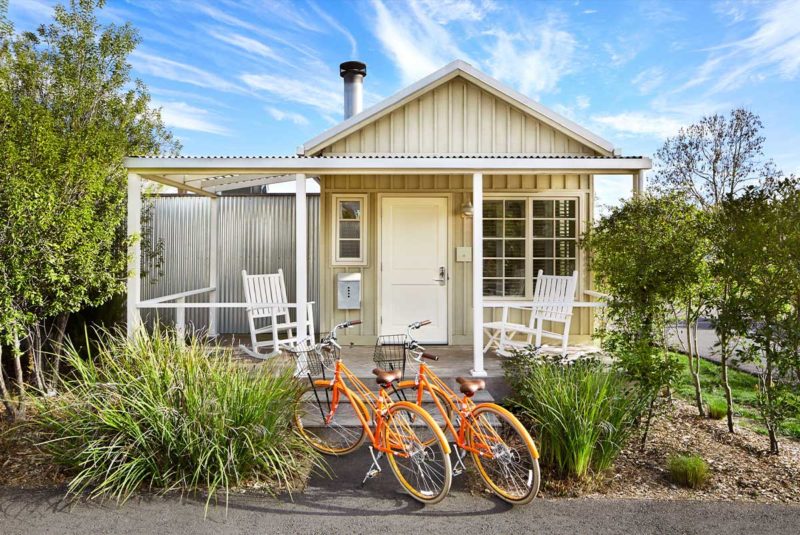Ready To Buy a Home?
Get Approved to Buy a Home
Rocket Mortgage® lets you get to house hunting sooner.
Whether you’re buying your first home or you’re already a homeowner, no mortgage experience is quite the same. With a wide variety of mortgages to pick from – each its own type, with specific terms and rates – it’s no surprise that shopping for a mortgage can feel overwhelming.
Knowing what you need in a loan may help reduce your stress – and narrow your options.
You’ll likely hear a lot of talk about fixed-rate loans, but a 10-year adjustable-rate mortgage (aka 10/1 ARM) can benefit some home buyers. Keep reading to learn more about 10/1 ARMs, including how they work – and how to know if they’ll work for you.
What Is a 10/1 ARM?
A 10/1 ARM is a type of adjustable-rate mortgage (ARM) with a fixed interest rate for the first 10 years of the loan. After 10 years, the interest rate becomes a variable rate that changes annually for the remainder of the loan.
You can also find ARMs with different terms, like the 5/1 ARM or 5/6 ARM, but 10/1 ARMs are among the most popular ARM loans.
How Does a 10/1 ARM Work?
To know how a 10/1 ARM works, you need to know what “10/1” means.
Like all ARMs, the first number tells you how many years the interest rate will remain fixed at the introductory rate (also known as the initial rate and often mistakenly as the “teaser rate”). The second number tells you how often the rate will adjust after the introductory period.
A 10/1 ARM has a fixed rate for 10 years (the 10 in “10/1”). After that, the interest rate will adjust every year for the rest of the loan’s term (the 1 in “10/1”). If interest rates change (think: go up or down) when it’s time to reset the loan’s rate, your monthly mortgage payment will adjust accordingly.
It works the same for other ARM loans, by the way:
- A 5/1 ARM has a fixed rate for 5 years, then the rate adjusts annually after that.
- A 5/6 ARM has a fixed rate for 5 years, then the rate adjusts every 6 months.
10/1 ARM rates
Your lender looks at federal interest rate benchmarks and financial markets to set your variable interest rate each year. They add the current market rate and a stated margin amount, resulting in your mortgage rate and payment for that year.
Lenders want you to keep making monthly mortgage payments even as your rate increases, so they protect you with interest rate caps. Interest rate caps keep your mortgage payments from getting too costly. The most common caps apply to different periods of the loan term:
- Initial adjustment: The first interest rate adjustment at the end of the introductory fixed term.
- Subsequent adjustment: The maximum adjustment allowed each year after the initial adjustment.
- Lifetime: The total lifetime interest rate cap based on your initial rate.
Interest rate cap example
Let’s look at one of the more common caps – the 2/2/5 cap – as an example.
Each number represents the initial, subsequent and lifetime caps:
- The first 2 means your initial adjustment can’t exceed 2% of your original rate.
- The second 2 means subsequent adjustments can’t exceed 2% of the previous rate.
- The 5 is the lifetime cap. The interest rate may never exceed 5% of your initial rate.
Use our mortgage calculator to see how variable rates can affect your monthly mortgage costs.
10/1 ARM vs. Fixed-Rate Mortgage
The main differences between a 10/1 ARM and a fixed-rate mortgage are in their names.
The interest rate on a fixed-rate mortgage stays the same for the entire term of the loan. A 10/1 ARM’s initial interest rate doesn’t change for 10 years, but once the intro period ends, the rate will adjust until the mortgage is paid off.
Fixed-rate mortgages typically have a straightforward repayment and amortization schedule. But ARMs are subject to adjustments based on market interest rates, making it harder to predict your payments after the fixed-rate term ends.
Fixed rates are especially advantageous during fluctuating markets, especially if you manage to lock in a low rate. But if mortgage interest rates are trending higher, a 10/1 ARM might be a better way to get a lower interest rate and save more money over the lifetime of your loan than you would with a fixed-rate mortgage.
Examples of a 10/1 ARM, 15-year and 30-year mortgage
Let’s say you want a $300,000 mortgage and your options are:
- A 10/1 ARM with a 2.5% APR (interest rate combined with fees) and 2/2/5 rate cap over 30 years
- A 15-year fixed-rate mortgage at 3.2% APR
- A 30-year fixed-rate mortgage at 4% APR
With a 10/1 ARM, your initial monthly payments would be about $1,185.36. But you could pay up to $1,779.99 a month if the interest rate maxes out at 7.5% under the 2/2/5 cap. At the 7.5% rate cap, you may pay as much as $263,585 in interest for the remainder of the 30-year term.
You’ll pay less in total interest with a 15-year fixed-rate mortgage, guaranteeing much lower overall interest paid at only $78,130. But your monthly mortgage payment would be around $2,100.72, which may be too expensive for many borrowers.
With a 30-year fixed-rate mortgage, your amortized payments would work out to about $1,297.40. You’d pay $247,220 in interest over the loan’s 30-year term, though you could reduce your total interest payment amount by making extra payments on the mortgage.
Pros and Cons of a 10/1 ARM
As with all mortgages, 10/1 ARMs have pros and cons.
PROS of a 10/1 ARM👍
You’ll get a lower initial interest rate than you would with a fixed-rate mortgage. This is especially helpful if interest rates are high when you purchase your home.
If rates stay low after the fixed-rate term ends and your rate drops, you might pay less interest than you would with a fixed-rate mortgage. You can also make extra principal payments during the fixed-rate term to lower your interest payments later on.
If you want to spend more time in your home before selling it, 10/1 ARMs offer a longer fixed-rate period than, let’s say, 5/1 or 7/1 ARMs.
CONS of a 10/1 ARM👎
You can’t predict what interest rates will be after the fixed-rate term ends. Even with a rate cap to keep your monthly mortgage payments from ballooning, you may end up with uncomfortably large monthly payments.
Some borrowers get a 10/1 ARM because they plan to sell the property before the fixed-rate period ends. If you miss the deadline to sell, you may end up with a higher interest rate and higher monthly mortgage payments. If it’s a buyer’s market when you list your property, you won’t be able to wait out the market to make as much profit as possible from selling your home.
But remember, refinancing your ARM into a fixed-rate mortgage might be a good option after your introductory period ends.
What To Consider Before Getting a 10/1 ARM
As tempting as 10/1 ARMs may sound because of their potential savings and benefits, you probably need a bit more information before you jump in.
We’ve compiled some answers to common questions about 10/1 ARMs.
How do 10/1 ARM rates compare to fixed mortgage rates?
Although the introductory 10/1 ARM interest rate is typically lower than a fixed rate, sometimes the difference between the two isn’t significant enough to justify the ARM’s unpredictable variable-rate period.
Even if you enjoy lower payments at first, you could pay more interest with a 10/1 ARM after the rates adjust than you would with a 30-year fixed-rate mortgage.
Can you pay off a 10/1 ARM early?
Yes, you can pay off a 10/1 ARM early. Some borrowers take advantage of the fixed-rate period and put extra cash toward the principal amount.
Before you pay off your mortgage early, check if your mortgage agreement includes a prepayment penalty clause. If the penalties are steep enough, it may not be a worthwhile exercise to pay off your mortgage early.
How long do you plan on owning the property?
If you plan to hang on to the property for less than 10 years, a 10/1 ARM may be a great choice. If you can sell before the variable period begins, you can avoid a potentially higher interest rate and give yourself time to build equity in the home.
Can you refinance a 10/1 ARM?
You can refinance your 10/1 ARM after the fixed-rate period.
If you earn a lower interest rate after refinancing to a fixed-rate mortgage or to another ARM, you could lower your monthly mortgage payments and reduce interest payments over the life of the loan. But don’t forget to factor in the closing costs to refinance. They could reduce your potential savings.
Is a 10/1 ARM Loan for You?
The sheer variety of mortgages might feel overwhelming, but it has advantages. Not every loan fits every circumstance – and a 10/1 ARM isn’t for every home buyer. A 10/1 requires a higher risk tolerance than a 15-year or 30-year fixed-rate mortgage.
But if you know how to take advantage of the loan – plan to make extra payments, sell within 10 years or refinance – a 10/1 ARM loan could be a great mortgage option. Whether it’s a 10/1 ARM or another loan, before deciding on a mortgage, it’s a good idea to get preapproved. A preapproval can help provide a road map for your home buying journey.
Take the first step toward buying a home.
Get approved. See what you qualify for. Start house hunting.
The Short Version
- A 10/1 ARM loan has a fixed rate for the first 10 years of the loan and will have variable rates for the remainder of the loan
- During the fixed-rate period, 10/1 ARM loans often have lower interest rates than fixed-rate mortgages – but interest rates can rise later on
- Lenders adjust 10/1 ARM variable rates every year based on market interest rates




